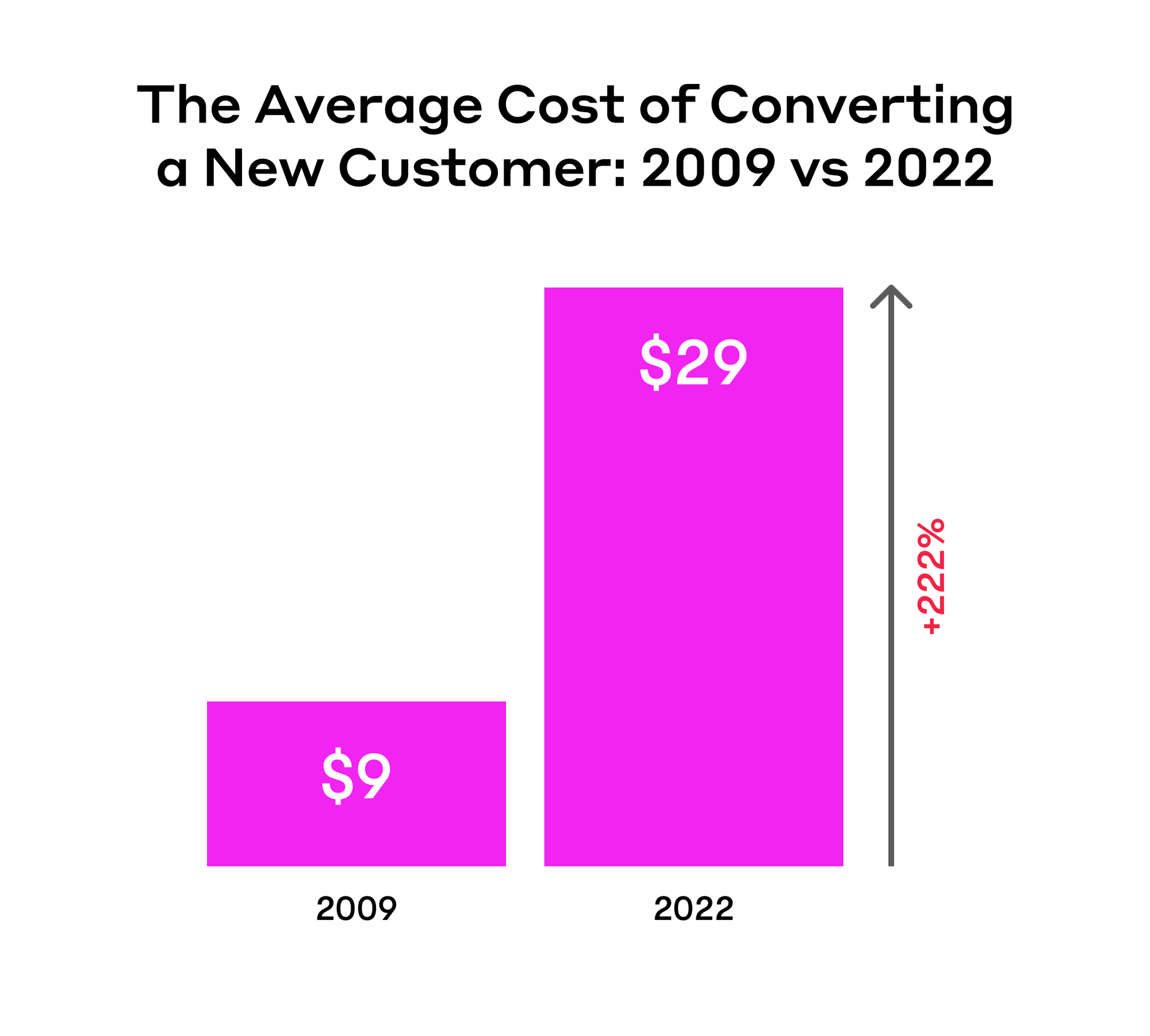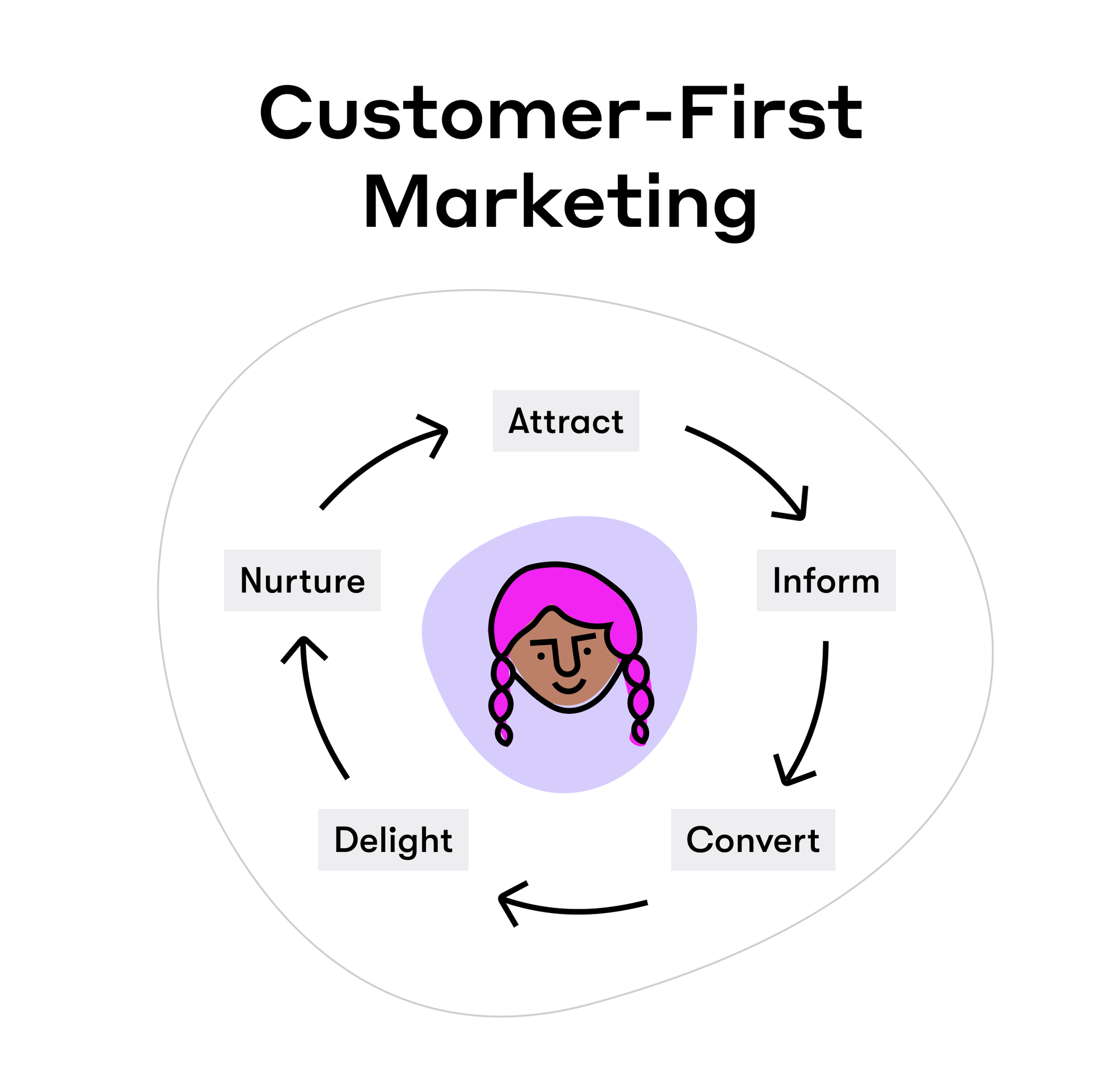It’s a hard time to be in ecommerce right now.
The promotions and marketing initiatives that used to work just aren’t bringing in the same return anymore.
Things have changed.
Massive pandemic growth has left you in the lurch as order volume fizzled out. You have to spend more for each conversion — leaving you with less and less in your pocket.
Sustainable growth feels like it’s just out of reach.
Where do we go from here? What’s the great solve for this current climate?
It’s time to invest in the best long-term strategy you can: your customer.
Great. Focus on your customer. Fantastic strategy. There’s just one problem.
What do you actually know about your customer?

The Challenge of Privacy Plus Rising Acquisition Costs
Anyone selling over the past few years has been confronted with the growing trend towards stricter privacy regulations across the globe.
Between the GDPR, Apple’s data-guarded policies, and other regulations popping up, your customers are becoming increasingly opaque.
And while that’s great for all of us in terms of privacy — it puts ecommerce marketers in a bit of a bind. We need data.
How do we, as marketers and customer-focused brands, reconcile respecting and protecting that privacy with wanting to offer a personalized customer experience?
In 2009, it cost ecommerce merchants just nine dollars to convert a new customer on average.
In 2022, it cost $29 — a 222 percent increase.

The bulk of that increase has happened over the past five years, provoked by — you guessed it — the introduction of iOS 14.5, the end of third-party-cookies, and increased consumer privacy legislation.
We’re not saying those regulations are a bad thing — au contraire.
We’ll be the first to tell you that more privacy is ultimately great for customers (and society as a whole).
However, as marketers, it means it’s time to get creative about the way we come to know our customers, and it means we need to learn how to do more with less.
And it’s not only with less data.
Needing to Do More with Less
That “less” will impact more than you’ve probably thought of — budgets will get tighter, tools and resources will be consolidated, and marketers will be expected to reach even higher growth goals with these fewer resources.
Using fewer resources and less overall data, we’ll need to provide better customer experiences.
It’s a tall order.
But it means we need to be proactive about the way we build relationships with our customers.
And while that’s a different playbook from the one we’re used to, it’s going to make those relationships even stronger.
So how are you meant to understand and truly know your customer if you don’t have access to them?
Bigger ecommerce giants like Amazon have tremendous amounts of data on each customer. This data is gathered through their shopping habits across categories.
With that, Amazon is able to offer personalized customer journeys based on what other customers have also purchased.
We already know that behavioral segmentation is often the most effective because it responds to what your customer needs at any given moment through their buyer journey.
What if you had access to a customer-first marketing automation platform that was able to give you that journey data, as well as a window into who your best customers were, and who were at-risk of churn?
With this view into our customers through purchase behavior, smaller ecommerce companies could, essentially, solve the problem of both protecting customer privacy and creating a customer journey that feels personal to them.
Why Ecommerce Companies Need to Focus on People Over Channels
The fact is, with increased privacy regulation, and higher CAC, we can no longer afford to focus on short-term transactions.
That was fine when it was cheap to convert new customers — even if investing in long-term strategies paid off more in the long run.
The problem is the short-term strategies no longer pay off at all, or at least, not enough to provide sustainable growth.
Over the past few years, we’ve heard words like multichannel and omnichannel take the stage as thought leaders described what needed to happen in the ecommerce industry.
The problem with those terms is the word “channel.” Because that puts the focus on channels.
You have to be on all channels.
It’s about sending the right message at the right time on the right channel.
If you’re not on 800 different channels, who even are you?
Those days are over. Because when ecommerce marketers get wrapped up in the channel aspect, they lose sight of where their focus should be — the customer.
The fact is, you should be on channels where your customers are. You should be using those channels to speak to the unique needs of your customers — as opposed to just making more noise.

You need to be on channels where you know you can expect a return because it’s the right place for your customer.
And many ecommerce sellers are missing the mark on this — not because they don’t want an excellent customer experience — but because they don’t know how to connect the data they have to creating that experience.

So Where Do We Go From Here?
The ecommerce merchants that win in 2023 and beyond will put their customers at the center of everything they do.
They’ll be the ones that know how to best interpret their insights from customer data and translate them into concrete customer-first strategies.
They’ll sit down with their customer journey and study it to figure out how they can improve it again and again.
And they’ll achieve sustainable growth from it.
We can’t change rising acquisition costs. We can’t change privacy regulations. These are two factors that will only increase exponentially as the next months and years progress.
What we can change is the way we strategize, and how we treat our customers. We can change the way we think about long-term customer-first marketing over short-burst transactions that will ultimately churn.
The only question remains: what will you change for your customers?
The perfect solution isn't out there — yet.
But right now, you can focus on building as many customer-first strategies as you can.
Drip can help you get there. With powerful behavioral segmentation, you can use the way your customers behave on your site to offer personalized messaging.
But don't take my word for it — try it free for 14 days and see for yourself what customer-first marketing can do.


